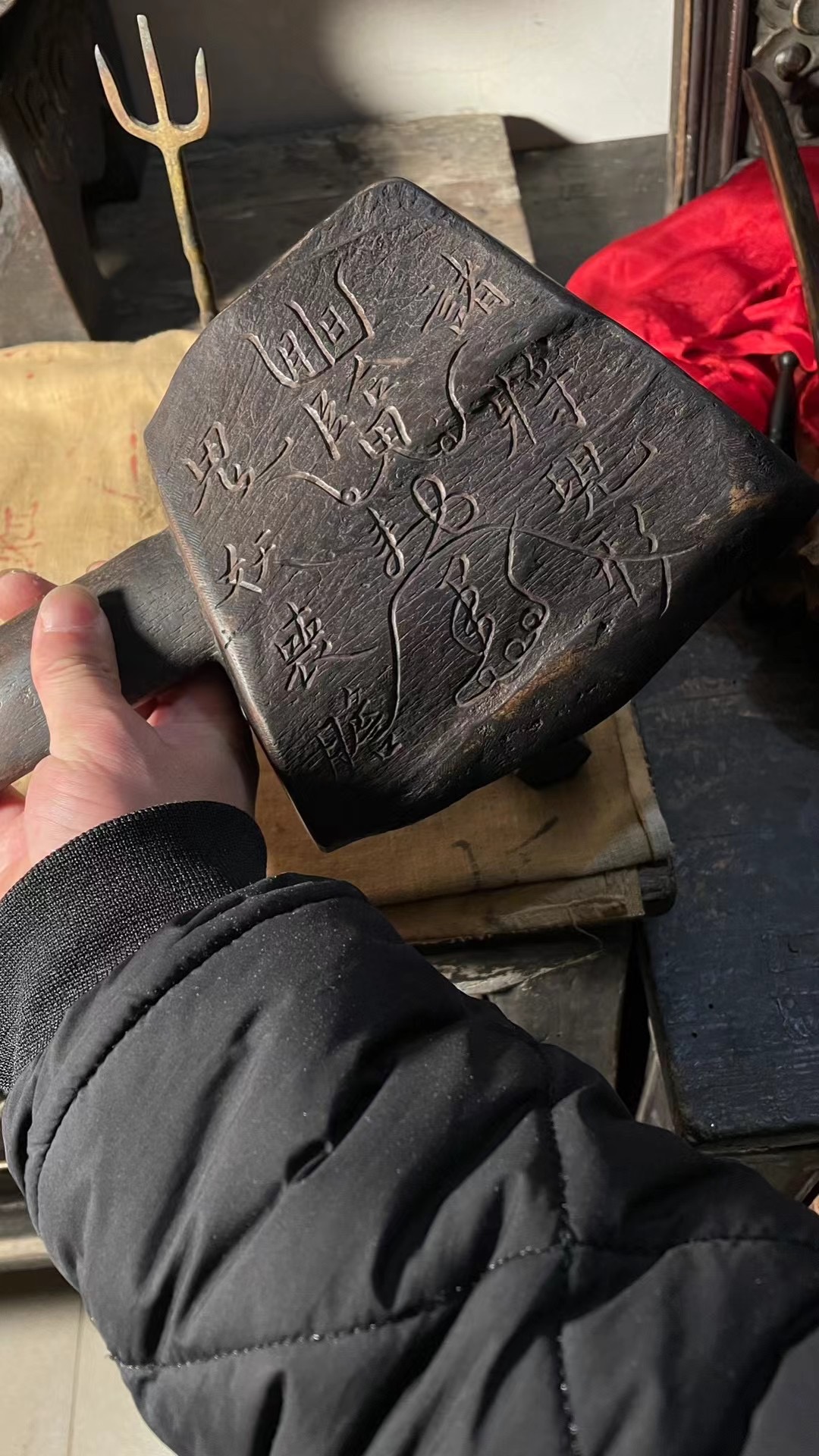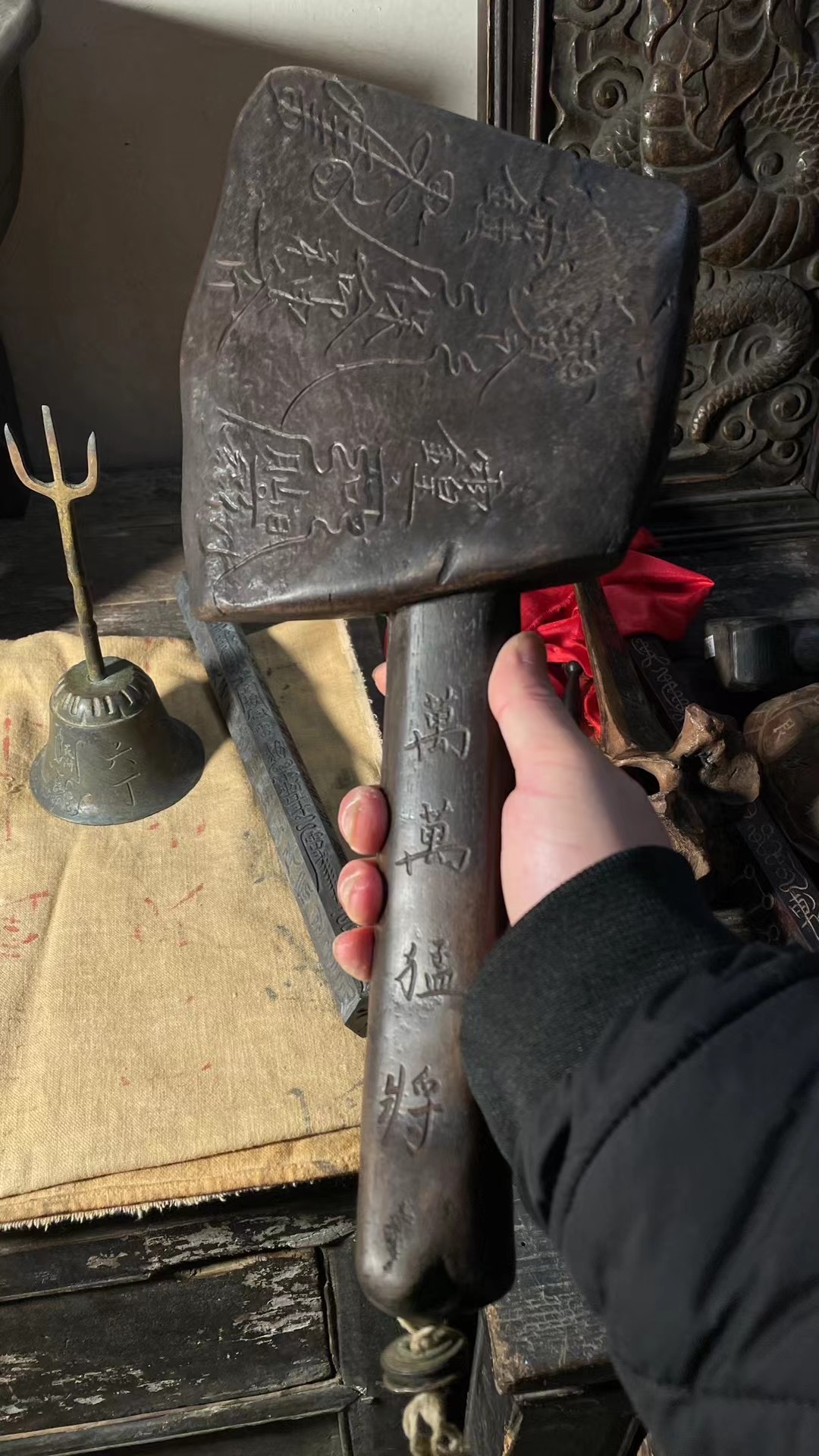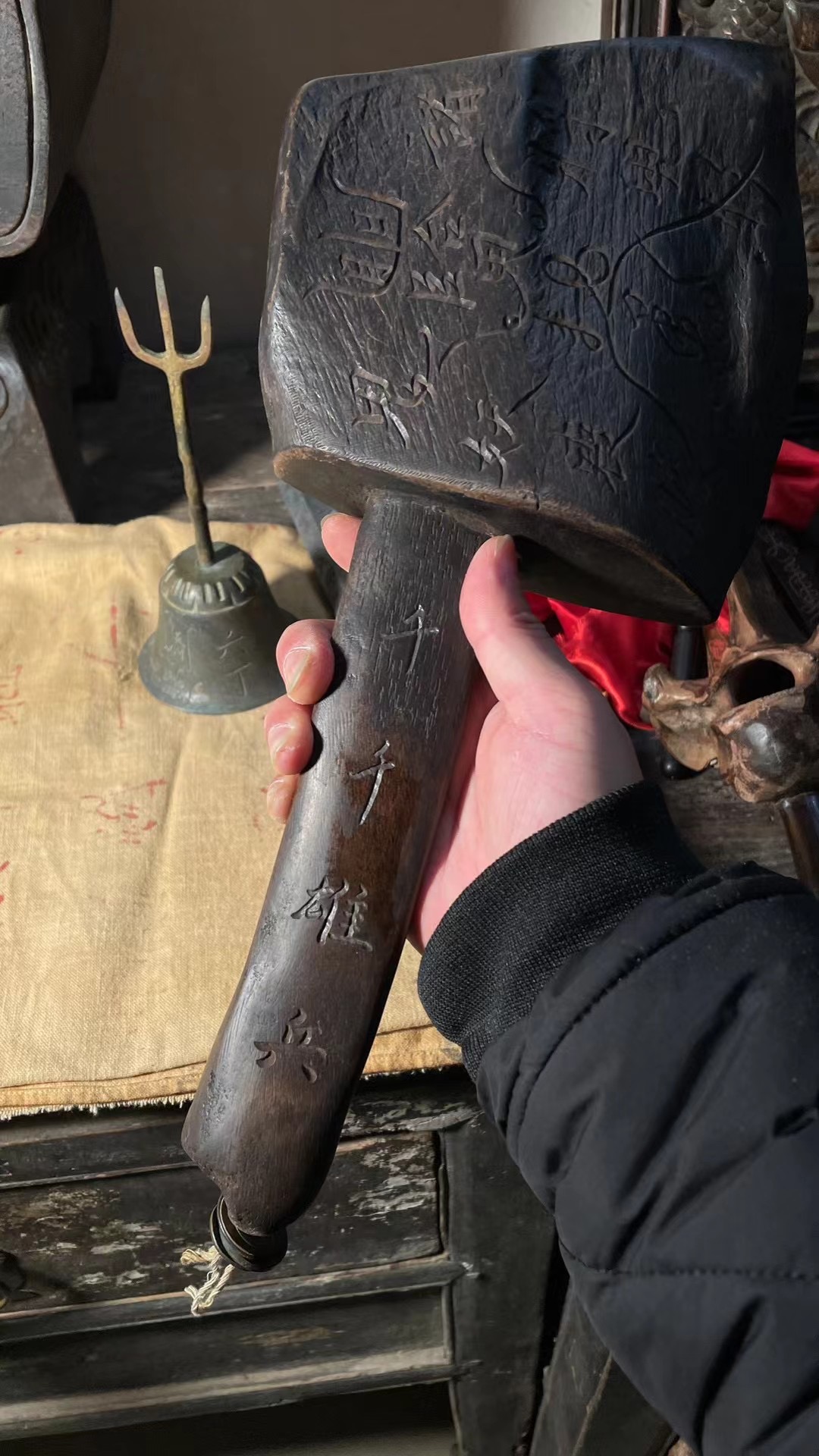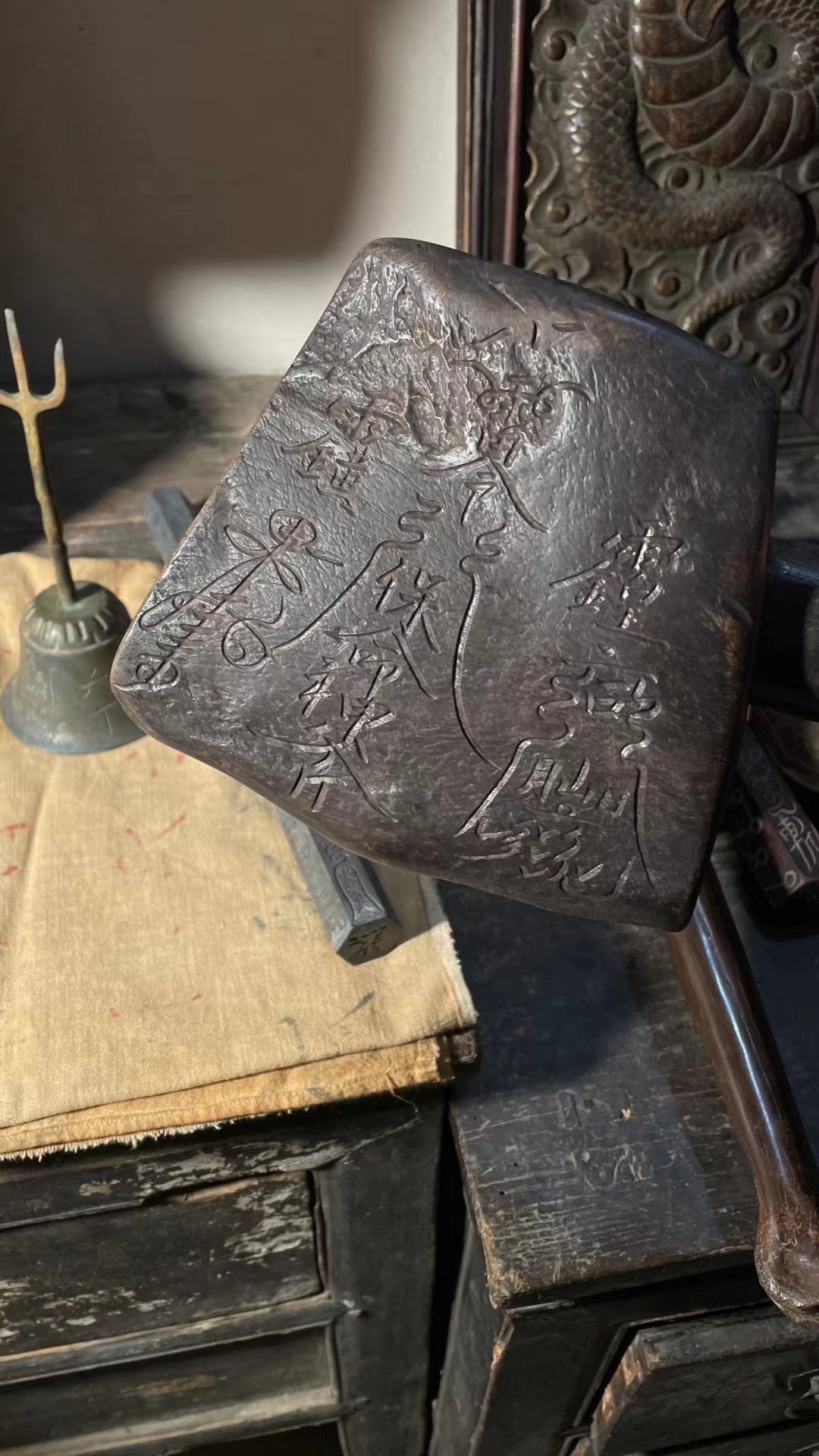







Typically made from animal bones or human bones, the bone axe is believed to possess magical powers and energies that can be used for home protection, exorcism, and dispelling bad luck. In folk beliefs and religious ceremonies, people believe that the bone axe can help eliminate negative energies and evil spirits within a home or region.
Associations: Related to folk beliefs, religious practices, exorcism, and supernatural phenomena
Appearance: Usually made from animal bones or human bones as an axe
Usage: Folk beliefs, religious ceremonies, home protection, exorcism, etc.
Functions and Effects
The Exorcising Bone Axe for Home Protection primarily serves the following functions and effects in folk beliefs and practices:
Exorcism and subduing demons: The bone axe is believed to have magical powers to dispel evil spirits, subdue demons, and protect family members from negative influences.
Home protection and tranquility: Using the bone axe helps suppress unstable energies within a home, creating a peaceful and tranquil living environment.
Improving luck: Folk beliefs hold that the bone axe possesses magical energies that help enhance and improve the luck of families and individuals.
Cultural symbolism: The bone axe serves as a cultural symbol of folk beliefs and religious practices, reflecting people's faith in mystical powers and supernatural phenomena.
Specific legends and origins surrounding the Exorcising Bone Axe for Home Protection may vary depending on regional differences, religious sects, and folk beliefs. However, the bone axe continues to hold a special position and significance in folk beliefs and practices.
The Zhenwu Emperor's Turtle-Snake Sword is a mysterious weapon closely associated with the Chinese Taoist deity Zhenwu Emperor (also known as Xuanwu Emperor).
Typicallymadefromanimalbonesorhumanbones,theboneaxeisbelievedtopossessmagicalpowersandenergiesthatca
The Guan Sheng Dijun Broad Sword is a mysterious weapon closely related to Chinese folk beliefs, Taoism, and culture.
aoist Talismans, also known as Taoist Charms, are an integral part of rituals, advanced techniques, and traditional culture within Taoism.
The Taoist Small Short Sword is a mysterious weapon closely related to Taoist beliefs, cultivation, and culture.
The Taoist Bell is a religious object closely related to Taoist beliefs, rituals, and cultivation.
The Ox-Head and Horse-Face Double-sided Amulet is a protective talisman closely associated with Chinese folk beliefs and religious practices.
The Three Mao Zhenjun Ancestors refer to the three supreme prophets and founders of Taoism.
The Zhao Gongming God of Wealth Statue refers to the depiction of the famous God of Wealth, Zhao Gongming, in Chinese folk beliefs and Taoist religions.
The Four Symbols Morning Ritual refers to a worship ceremony held in Chinese Taoist temples and palaces to pay respect to the gods of heaven, earth, and the guardians of the four cardinal directions.
A Medicine Bottle for Taoist Alchemy and Healing refers to the bottle used for holding pills, herbal medicines, and other therapeutic drugs in ancient China's Taoist cultivation and medical practices.
The Tortoise and Serpent Zhenwu Ancestor Peach Wood Sword is a mysterious Taoist cultural relic with a strong religious connotation.
The Bagua Zi Wu Yuan Yang Yue, as a Taoist ritual implement, serves various purposes in spiritual practice and ceremonies.
A religious symbol with connections to Chinese folk beliefs and Daoist cultivation. This article discusses the concept, origin, function, and legends associated with it.
A religious symbol associated with Chinese folk beliefs and Daoist cultivation. This article discusses the concept, origin, function, and legends associated with it.
A symbolic item associated with Chinese folk beliefs and Daoist cultivation. This article discusses the concept, origin, function, and legends associated with it.
The Damo Heavenly Sword, crafted from bone, is an extraordinary and unique Taoist ritual implement with great significance in spiritual practices and traditional Chinese culture. Its uniqueness lies in the choice of material and the intricate designs adorning it.
The Taoist Ritual Fan is a distinctive accessory widely used in Taoist ceremonies and cultivation activities.
The Zhang Tianshi Master's Sword is closely related to the famous Taoist figure Zhang Tianshi (Zhang Daoling).
The Town-protecting Copper Skull is an item used as a talisman for warding off evil and protecting households in Chinese folk beliefs and legends.
The Twin Dragon Copper Sword has a rich history in Chinese culture, serving both practical and symbolic purposes.
The Three Pure Ones Fan is a ritual instrument in Chinese Taoism, usually associated with the three main Taoist deities, known as the "Three Pure Ones" (the supreme gods in Taoism).
The Lüshan Bugle, as a speculative term, may have its significance in history, function, and legends connected to Lushan (Lüshan) in China.
The Dragon Head Walking Stick is a decorative or symbolic walking stick with a dragon head design on its handle.
The Seven-Star Sword, originating from ancient Chinese culture, possesses both practical and symbolic functions, with numerous legends related to it.
The Ruyi is a traditional cultural object and ritual implement originating from China, typically crafted into a curved shape with a broad end and a slightly pointed opposite end, meant to be held in one's hand.
The Taoist Gourd is an item of significant symbolism within Taoist culture.
The Taoist Copper Circle is a traditional ritual implement in Taoism, made of copper and generally round in shape.
The Taoist Imperial Bell is a special type of large bell used in Taoist palaces and temples, similar in shape and material to other imperial bells, typically made from high-quality bronze.
Bone ritual implements refer to ritual objects made from animal bones or human bones, commonly used in religious ceremonies, sacrificial activities, and shamanistic practices.
The Zhang Tianshi Token is a religious artifact derived from Taoist beliefs, associated with Zhang Tianshi (Zhang Daoling), one of the founders of Chinese Taoism and a prominent Taoist figure.
The Old Wooden Fish, also known as the Wooden Fish, is a religious percussion instrument originating from ancient China, primarily used in Buddhist and Taoist sutra recitations, prayers, and spiritual practices.
The Lei Zu Dragon Whip is a mysterious weapon originating from Chinese folklore.
The Lei Zu Qiankun Ring is a mysterious weapon originating from Chinese folklore and mythology.
The Lei Zu Ritual Drum is a religious percussion instrument originating from Chinese folklore and mythology.
Lei Zu is a mysterious figure or deity from Chinese folklore and mythology, often associated with the Thunder God, Taoism, and ancient cultivation traditions.
The Fortune God Zhao Gongming Token is a mysterious charm or talisman originating from Chinese folklore and religious practices.
The Daoist short sword, often referred to as a "jian" or "flying sword" , is a legendary weapon typically associated with Chinese folklore, mythology, and Taoist martial arts practices.
The Daoist Ritual Ruler is a mystical ritual tool originating from Chinese Taoist culture and folk beliefs.
The Four Symbols Celestial Ruler is a mystical measuring tool originating from Chinese culture and associated with ancient cosmology and Bagua theories.
The Swallowed Thunder Ancestor Whip is a legendary weapon originating from Chinese folktales and mythology.
The Taoist Copper Hammer is a mysterious ritual tool associated with Chinese Taoist culture and religious ceremonies.
The Taoist Copper Ritual Knife is a mystical weapon originating from Chinese Taoist culture and religious ceremonies.
King Wen's Oracle Turtle Shells is an ancient method of divination that originated during the Shang Dynasty in ancient China. King Wen of Zhou, named Ji Chang, was one of the founders of the Zhou Dynasty.
King Wen's Oracle Giant Turtle Shells are a method of divination originating from the Shang Dynasty in ancient China, closely related to King Wen.
The Taoist Ivory and Bone Knife is a mysterious weapon closely related to Chinese Taoist rituals, beliefs, and traditions.
The Mysterious Lady Sword Set is a mysterious weapon closely related to Chinese Taoist tradition and culture.
The Maoshan Terracotta Army Pot originates from Maoshan in Jiangsu Province, China, and is a mysterious artifact closely related to Taoist beliefs, ceremonies, and religious practices.
The Taoist Copper Incense Burner is a mysterious artifact closely related to Chinese Taoist beliefs, ceremonies, and traditions.
The Celestial Master Pure Copper Sword is a mysterious weapon closely related to Chinese Taoist tradition and culture.
The Taoist Copper Axe is a mysterious artifact closely related to Chinese Taoist beliefs, ceremonies, and traditions.
The Peach Wood Sword is a mysterious weapon closely related to Chinese Taoist beliefs, ceremonies, and culture. Made from peach wood, it is believed to have magical powers in Taoism and folk beliefs, capable of warding off evil and suppressing malicious spirits.
The Wenchang Dijun Amulet is a protective talisman closely related to Taoist beliefs and traditional culture.
The Coin Sword, also known as the Bronze Coin Sword, originates from ancient China.
The Taoist Bone Sword is a unique weapon with symbolic significance and mysterious powers within Taoist culture.
The origin of the Huaguang Emperor's Bronze Spear dates back to ancient China. It is closely related to the legendary ancient emperor Huaguang, said to be the weapon used by him.
Copyright © 2024 By Taoisttreasures

